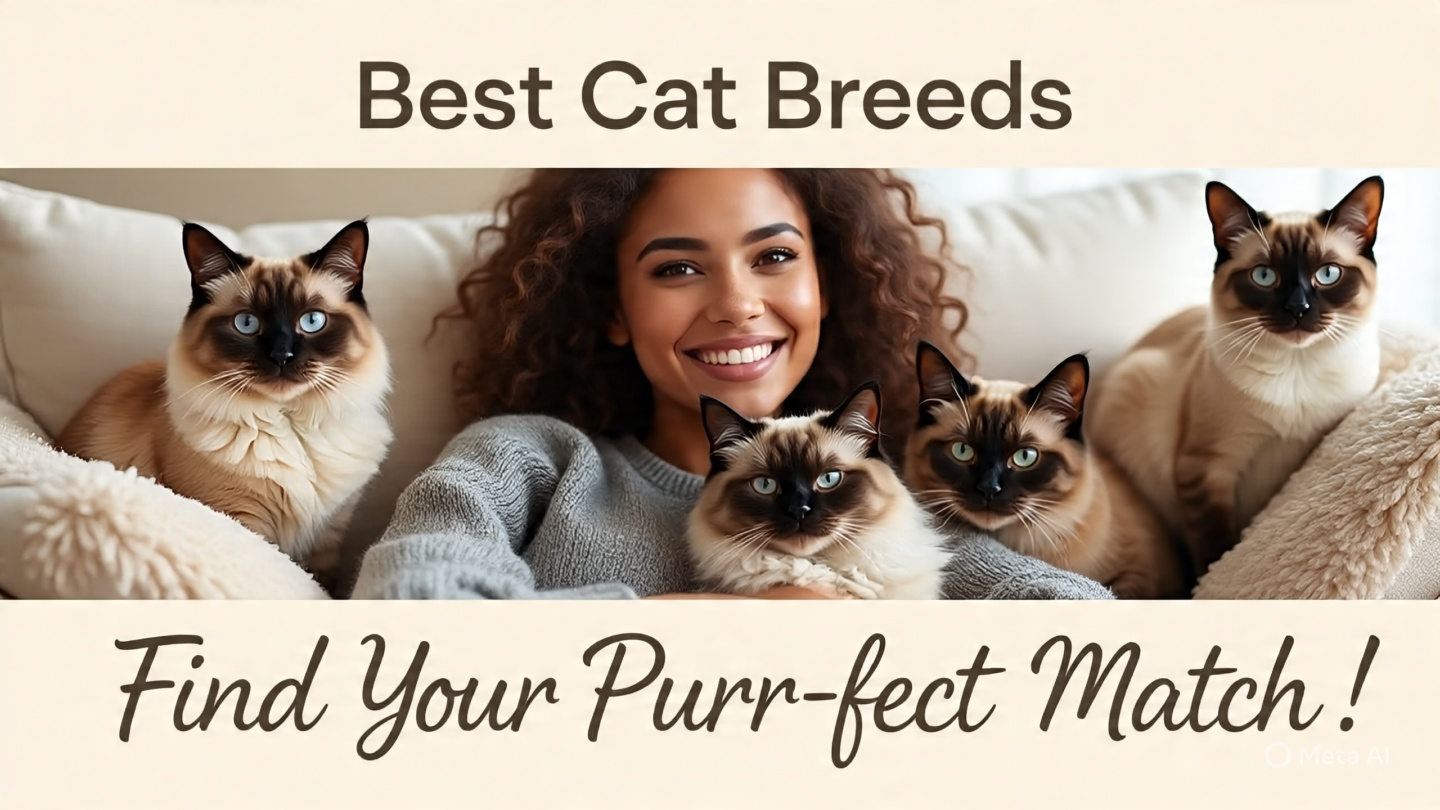Expensive cat breeds offer stunning beauty but come with unique needs. As a veterinarian for over fifteen years, I’ve had the joy of meeting thousands of cats. In my exam room, I see everything from the classic domestic shorthair to the most exotic-looking pedigreed felines. One question I hear often from true cat fans is, “Dr. SK, I’m thinking of getting a [specific beautiful breed]. Is it worth it?”

That’s an excellent question. Deciding to welcome any cat into your home is a significant decision, but even with some spectacular breeds, the decision to bring one of these cats into your home goes far beyond cost. These cats are living art and, like art, they are special by design. Today, I want to help you understand what it feels like to have one of these beautiful cats in your family and I will do this professionally.
Table of Contents
What “Expensive Cat Breeds” Really Means Beyond the Purchase Price
When we discuss costly cat breeds, people’s first consideration is usually the purchase price from a breeder, which is anywhere from $1000 to over $5000 with some cat breeds. However, as your veterinarian, I am primarily concerned about your future pet’s lifelong health and happiness. Therefore, the true cost can include health issues of concern specific to the breed, specialized grooming, quality nutrition, and pet insurance. If you can make these investments upfront, it is how you are going to establish a long life and happy life with your new pet.
11 Breathtaking Most Expensive Cat Breeds
Let’s explore some of the most sought-after breeds I see in my practice and what you should know from a health perspective.
1. The Savannah Cat: The Towering Treasure
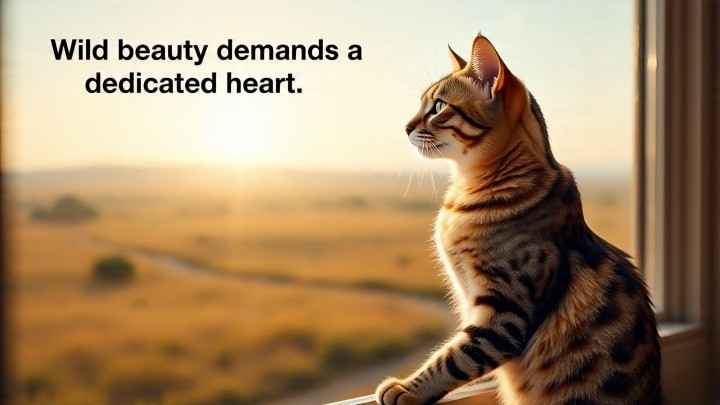
For those seeking the ultimate feline spectacle, the Savannah stands as one of the most striking and expensive cat breeds. As a vet, I remind potential owners that their cost isn’t just about their wild beauty; it’s an investment in specialized care for a companion of unparalleled energy and loyalty.
| Aspect | Details |
|---|---|
| Origin & History | A hybrid breed developed in the 1980s from crosses between domestic cats and the African Serval. Earlier generations (F1, F2) have a higher percentage of wild blood. |
| Coat & Colors | Spotted coat in shades of brown, silver, or black. The spots are bold and dark against a lighter background. |
| Height & Weight | Male: 12-17 lbs, Female: 9-13 lbs. Height can be up to 17 inches at the shoulder. Size heavily depends on generation. |
| Adaptability | Low. Needs a huge amount of space, vertical climbing, and mental stimulation. Not suited for small apartments or first-time owners. |
| Life Span | 12-20 years |
| Common Health Issues | Hypertrophic Cardiomyopathy (HCM), some genetic sensitivity to anesthesia. |
| Approximate Cost | $1,500 – $25,000+ (Price drastically increases for earlier generations closer to the Serval) |
| Special Character | Dog-like loyalty, can be taught to walk on a leash and play fetch. Known for their incredible jumping height. |
| Grooming Needs | Low. Weekly brushing is sufficient. Expense is low. |
| Celebrities | Justin Bieber, Kevin Hart |
| Why So Expensive? | Complex breeding process, rarity, high demand, and significant legal restrictions and licensing for earlier generations. |
2. The Bengal Cat: The Miniature Leopard

The symbol of feline luxury, the Persian is a classic but costly companion. This breed’s status as one of the most expensive cat breeds is directly tied to its need for daily, meticulous grooming and proactive veterinary care for its unique brachycephalic features.
| Aspect | Details |
|---|---|
| Origin & History | Developed in the USA by crossing domestic cats with the Asian Leopard Cat in the 1960s-70s. |
| Coat & Colors | Spotted or marbled patterns in brown, silver, snow (lynx point), and charcoal. Coat has a unique “glittered” effect. |
| Height & Weight | Male: 10-15 lbs, Female: 8-12 lbs |
| Adaptability | Medium-High. Very adaptable but requires an active home with plenty of interactive play to channel its high energy. |
| Life Span | 12-16 years |
| Common Health Issues | Hypertrophic Cardiomyopathy (HCM), Progressive Retinal Atrophy (PRA), and sensitive stomachs. |
| Approximate Cost | $1,500 – $5,000 |
| Special Character | Highly intelligent, energetic, and often fascinated by water. Very vocal and communicative. |
| Grooming Needs | Low. Weekly brushing to minimize shedding. Expense is low. |
| Celebrities | Kristen Stewart, Jerry Seinfeld |
| Why So Expensive? | High demand for their wild appearance, costly health testing for responsible breeders (HCM/PRA scans), and selective breeding for temperament. |
3. The Persian: The Fluffy Aristocrat
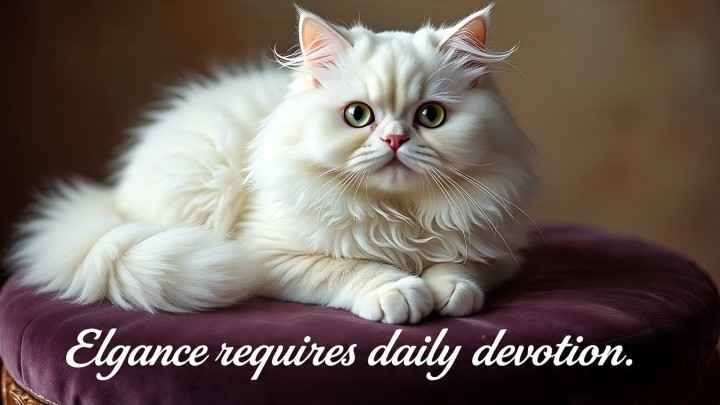
An example of feline luxury, the Persian is a traditional yet expensive pet. This breed is well-known for being one of the priciest types of cats because it requires daily devoted grooming and proactive medical care for the brachycephalic breed.
| Aspect | Details |
|---|---|
| Origin & History | One of the oldest breeds, originating in Persia (modern-day Iran). Brought to Europe in the 1600s. |
| Coat & Colors | Long, thick, luxurious coat. Over 80 color variations, including solid, Himalayan (pointed), tabby, and particolor. |
| Height & Weight | Male: 9-14 lbs, Female: 7-11 lbs |
| Adaptability | High. Extremely calm and docile. Perfect for quiet, indoor apartment living. Not suited for noisy, hectic homes. |
| Life Span | 10-17 years |
| Common Health Issues | Brachycephalic Syndrome (breathing issues), dental malocclusions, Polycystic Kidney Disease (PKD), and tear staining. |
| Approximate Cost | $1,300 – $5,000 |
| Special Character | The ultimate lap cat. Gentle, quiet, and sweet-tempered. They are not jumpers or climbers. |
| Grooming Needs | Very High. Requires daily, thorough brushing to prevent life-threatening mats. Professional grooming every 6-8 weeks is common. Expense is high. |
| Celebrities | Taylor Swift (Meredith Grey & Olivia Benson), Martha Stewart |
| Why So Expensive? | High grooming maintenance, significant health testing for PKD, and their status as a classic, prestigious breed. |
4. The Sphynx: The Hairless Wonder
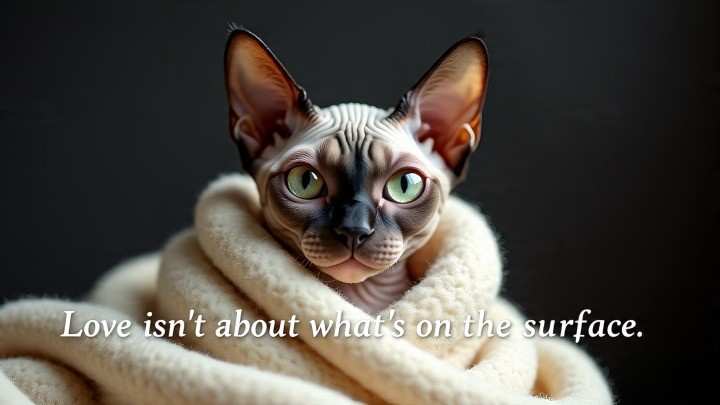
Beyond their unique appearance, the Sphynx’s place as one of the most expensive cat breeds is due to their high-maintenance needs. Their purchase price is merely the first step; owning one means committing to a routine of weekly baths and dedicated health monitoring.
| Aspect | Details |
|---|---|
| Origin & History | Result of a natural genetic mutation in Canada in the 1960s. The breed was developed through selective breeding. |
| Coat & Colors | Hairless, though covered in a fine peach-fuzz down. They can display any skin color and pattern. |
| Height & Weight | Male: 10-12 lbs, Female: 8-10 lbs |
| Adaptability | High. They seek out warmth and human companionship. Thrive in indoor homes where they are the center of attention. |
| Life Span | 12-15 years |
| Common Health Issues | Skin issues (sunburn, acne), Hypertrophic Cardiomyopathy (HCM), and hereditary myopathy (muscle weakness). |
| Approximate Cost | $1,800 – $6,000 |
| Special Character | Extroverted, clown-like, and intensely affectionate. They feel like warm suede to the touch. |
| Grooming Needs | High. Weekly baths are essential to remove oily skin buildup. Ears and nails need weekly cleaning. Expense is moderate (special shampoos, etc.). |
| Celebrities | Ted Danson, Ricky Gervais |
| Why So Expensive? | Specialized care needs, rigorous health screening for HCM, and relatively small litter sizes. |
Without fur, they require weekly baths to remove oily buildup. They are prone to ear wax accumulation and need regular ear cleanings. They also get cold easily and can sunburn, so they are strictly indoor cats who might need a sweater.
5. The Peterbald: The Elegant Alien

For those drawn to hairless elegance, the Peterbald is a newer and notably expensive cat breed. Their cost reflects their rarity, slender grace, and the same dedicated skin and health care regimen required by their hairless cousins.
| Aspect | Details |
|---|---|
| Origin & History | Created in Russia in 1994 from a cross between a Donskoy (another hairless breed) and an Oriental Shorthair. |
| Coat & Colors | Can be born hairless, flocked (ultra-soft peach fuzz), velour (slightly longer fuzz), or brush (wiry, curly coat). |
| Height & Weight | Male: 8-10 lbs, Female: 6-8 lbs (A slender, elegant breed) |
| Adaptability | High. They are extremely social, affectionate, and need to be with their people. Not suited to being left alone for long periods. |
| Life Span | 12-15 years |
| Common Health Issues | Similar to Sphynx: skin issues, dental problems (due to lack of hair follicles), and respiratory infections. |
| Approximate Cost | $1,500 – $5,000 |
| Special Character | Highly intelligent, agile, and deeply attached to their owners. They have the elegant body of an Oriental Shorthair. |
| Grooming Needs | High. Hairless varieties need weekly baths and skin care. All types require regular ear cleaning. Expense is moderate-high. |
| Celebrities | Still a rare breed, not widely owned by celebrities yet. |
| Why So Expensive? | Extreme rarity, specialized grooming needs, and the fact that they are a very new breed with a small gene pool. |
Their skin care needs are similar to the Sphynx, requiring regular bathing. They are also a relatively new breed, so working with a vet to monitor their overall health is key. Their slender build means they need a high-quality diet to maintain a healthy weight.
6. The Russian Blue: The Green-Eyed Shadow

The Russian Blue offers a different kind of value among expensive cat breeds. Their cost is a testament to their pristine reputation for robust health and their hypoallergenic, plush coat. You’re investing in a gentle, graceful shadow with a famously long lifespan.
| Aspect | Details |
|---|---|
| Origin & History | Natural breed originating from the port of Arkhangelsk, Russia. Brought to Europe by sailors in the 1860s. |
| Coat & Colors | Short, dense double coat of a uniform blue-gray color with distinct silver tipping. |
| Height & Weight | Male: 10-12 lbs, Female: 7-10 lbs |
| Adaptability | Medium. Adapts well to indoor life but is often shy with strangers. Does best in a calm, predictable environment. |
| Life Span | 15-20 years |
| Common Health Issues | A generally healthy breed but can be prone to obesity and urinary tract issues if diet is not managed. |
| Approximate Cost | $800 – $3,000 |
| Special Character | Reserved and gentle with family, known for a subtle smile. Quiet and observant, often called “shy” or “a one-person cat.” |
| Grooming Needs | Low. Weekly brushing is plenty. They are known to be fastidious self-cleaners. Expense is low. |
| Celebrities | N/A (They value their privacy!) |
| Why So Expensive? | Their pristine reputation for being healthy, hypoallergenic qualities, and elegant, unique appearance. |
This is generally a very healthy breed with few genetic problems. However, their reserved nature means they need a quiet, stable home to feel secure. They can be prone to obesity if their diet isn’t carefully managed, so portion control is important.
7. The Scottish Fold: The Owl-Like Sweetheart
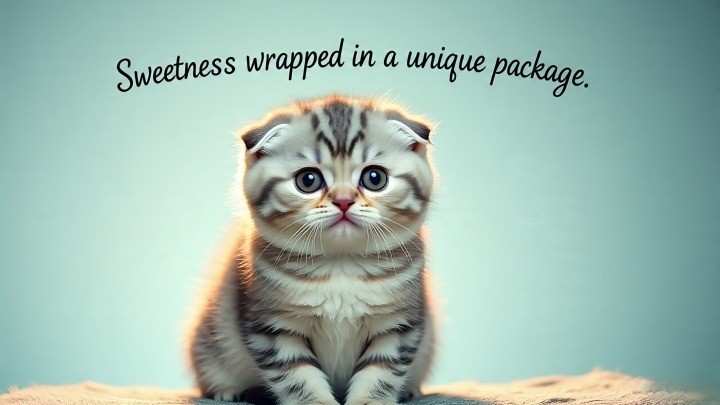
The Scottish Fold’s owl-like charm makes it a highly sought-after and expensive cat breed. However, from an ethical veterinary standpoint, their cost is overshadowed by the imperative to only source from breeders who prioritize health over the folded ear trait.
| Aspect | Details |
|---|---|
| Origin & History | Began with a single folded-ear cat named Susie found on a Scottish farm in 1961. All Folds descend from her. |
| Coat & Colors | Can be longhair or shorthair. All colors and patterns are accepted. |
| Height & Weight | Male: 9-13 lbs, Female: 6-9 lbs |
| Adaptability | High. Easygoing, sweet, and adaptable to most homes. Their calm nature makes them good apartment cats. |
| Life Span | 11-15 years |
| Common Health Issues | Osteochondrodysplasia: the genetic cartilage defect that causes the folded ears and leads to painful, crippling arthritis throughout the body. |
| Approximate Cost | $1,000 – $3,000 |
| Special Character | Known for their sweet, “owl-like” appearance and calm, quiet demeanor. They often sit in a “Buddha position.” |
| Grooming Needs | Medium. Weekly brushing for shorthairs; 2-3 times a week for longhairs. Expense is low to moderate. |
| Celebrities | Ed Sheeran, Taylor Swift (formerly) |
| Why So Expensive? | High demand for their unique look, despite the serious ethical and health concerns associated with the breed-defining gene. |
This is the most important breed to discuss. The gene that causes the cute folded ears is also linked to a lifelong, painful joint disease called osteochondrodysplasia. This can cause crippling arthritis. For this ethical reason, many veterinarians and cat fanciers have concerns about the breed. If you consider one, pet insurance is a must.
8. The Ragdoll: The Gentle Giant
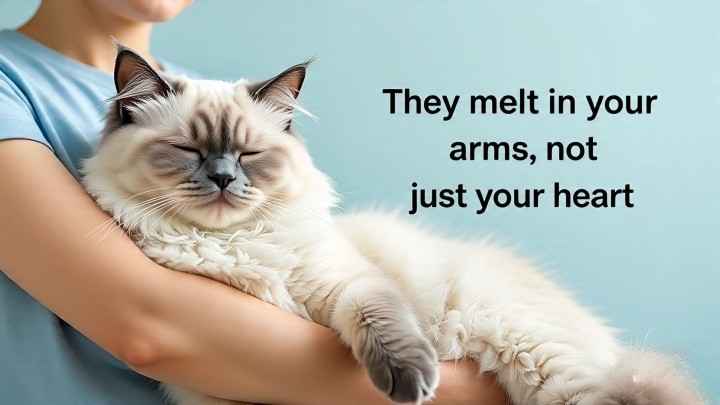
The Ragdoll’s floppy, gentle nature justifies its place among beloved expensive cat breeds. Their price reflects their large size, beautiful color-point coat, and, most importantly, the necessary genetic screening to ensure a healthy, loving “puppy-cat” companion.
| Aspect | Details |
|---|---|
| Origin & History | Developed in California in the 1960s by breeder Ann Baker. The foundation was a domestic longhaired white cat. |
| Coat & Colors | Semi-longhair, color-pointed coat (darker face, ears, legs, tail). Patterns: colorpoint, mitted, bicolor. |
| Height & Weight | Male: 15-20 lbs, Female: 10-15 lbs (One of the largest domesticated breeds) |
| Adaptability | Very High. Docile, placid, and famously floppy when held. Excellent for families and indoor living. |
| Life Span | 12-17 years |
| Common Health Issues | Hypertrophic Cardiomyopathy (HCM) – a specific gene mutation exists in the breed. Responsible breeders test for this. |
| Approximate Cost | $1,200 – $3,000 |
| Special Character | Their name comes from their tendency to go completely relaxed and limp when picked up. They are extremely gentle and non-aggressive. |
| Grooming Needs | Medium-High. Their fur is silky and doesn’t mat easily, but requires brushing 2-3 times a week. Expense is moderate. |
| Celebrities | Paris Hilton, Annabelle Wallis |
| Why So Expensive? | Their large size, desirable temperament, and the necessity of genetic testing for HCM in breeding stock. |
Their main concern is a genetic predisposition to Hypertrophic Cardiomyopathy (HCM). A responsible breeder must provide proof that both parent cats have been tested and are clear of the known genetic mutation. Their semi-long coat requires regular brushing to prevent mats.
9. The Egyptian Mau: The Spotted Speedster
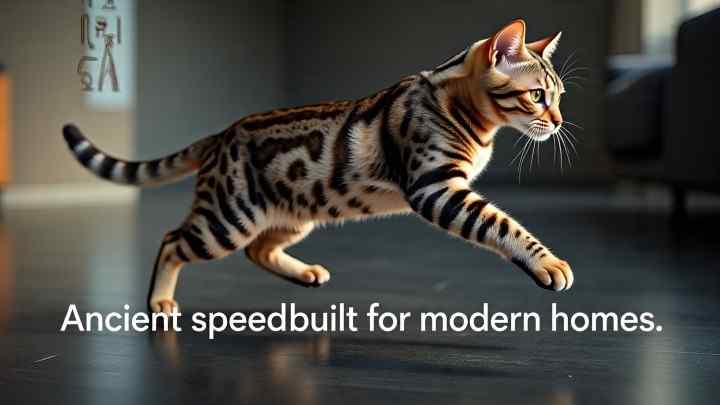
The Egyptian Mau is the only domestic breed with natural spots that qualifies as one of the most expensive breeds. Your purchase supports more than just their amazing spots and their speed; you’re also making a choice to own living history with a unique personality.
| Aspect | Details |
|---|---|
| Origin & History | Naturally spotted breed, likely originating in Egypt. The name “Mau” is the Egyptian word for cat. Modern breeding began in the 1950s. |
| Coat & Colors | Spotted coat in silver, bronze, or smoke. They have a distinctive “M” marking on the forehead and mascara lines on cheeks. |
| Height & Weight | Male: 10-14 lbs, Female: 6-10 lbs |
| Adaptability | Medium. They are loyal to family but often shy with strangers. Need active play and are known for their speed. |
| Life Span | 12-15 years |
| Common Health Issues | Generally healthy. Some lines may be prone to urinary tract issues and allergies. |
| Approximate Cost | $1,000 – $2,500 |
| Special Character | The fastest domestic cat breed (can run up to 30 mph!). They are known for a worried expression and are very vocal with a unique chirp. |
| Grooming Needs | Low. Weekly brushing is sufficient. Expense is low. |
| Celebrities | Nicole Richie, Gregory Peck |
| Why So Expensive? | They are the only naturally spotted domestic breed, which is rare. The gene pool outside of Egypt is relatively small. |
They are generally healthy but can be prone to certain allergies and skin conditions. Their athletic nature means they need plenty of vertical space and opportunities to run. A cat wheel can be a fantastic investment for a Mau.
10. The British Shorthair: The Plush Teddy Bear

The plush British Shorthair, a teddy bear in cat form, is a moderately expensive cat breed. Their cost is often linked to their desirable, chunky physique and famously calm, easygoing disposition, making them a wonderful investment for a serene household.
| Aspect | Details |
|---|---|
| Origin & History | One of England’s oldest breeds, dating back to the Romans. Developed from robust British street cats. |
| Coat & Colors | Very dense, plush “crisp” coat. Blue is the most famous color, but comes in virtually all colors and patterns. |
| Height & Weight | Male: 12-18 lbs, Female: 9-15 lbs (A sturdy, compact breed) |
| Adaptability | Very High. Easygoing, calm, and undemanding. They are not overly athletic and adapt well to most homes. |
| Life Span | 12-20 years |
| Common Health Issues | Prone to obesity. Some lines may be predisposed to Hypertrophic Cardiomyopathy (HCM) and hemophilia B. |
| Approximate Cost | $1,000 – $2,500 |
| Special Character | Often called the “Bulldog” of the cat world due to their stout, cobby body and round face. Independent but affectionate. |
| Grooming Needs | Medium. Their dense coat needs brushing 2-3 times a week, more during seasonal shedding. Expense is low. |
| Celebrities | The Cheshire Cat from Alice in Wonderland was inspired by this breed. |
| Why So Expensive? | Their classic, desirable look, long lifespan, and generally excellent health. |
Their laid-back nature makes them prone to obesity. It’s crucial to monitor their diet and encourage play. They can also be predisposed to Hypertrophic Cardiomyopathy (HCM), so asking breeders about cardiac screening is important.
11. The Norwegian Forest Cat: The Majestic Explorer

This majestic Viking of the cat world is a robust but expensive cat breed. Your investment goes toward a cat built for adventure, with a breathtaking double coat that requires regular upkeep to keep this gentle giant looking and feeling its best.
| Aspect | Details |
|---|---|
| Origin & History | Natural breed from Scandinavia, with a history woven into Norse mythology. They are believed to have been Viking ship cats. |
| Coat & Colors | Long, waterproof double coat in almost any color and pattern. Recognizable by their ruff, tufted ears, and bushy tail. |
| Height & Weight | Male: 12-16 lbs, Female: 9-12 lbs (A large, powerful breed) |
| Adaptability | High. They are skilled climbers and need tall cat trees. Calm and friendly, adapting well to family life. |
| Life Span | 14-16 years |
| Common Health Issues | Generally robust. Can be prone to Glycogen Storage Disease IV (a rare hereditary condition) and HCM. |
| Approximate Cost | $800 – $2,500 |
| Special Character | A true “gentle giant.” They are strong, intelligent climbers with a calm and sweet nature. |
| Grooming Needs | Medium-High. Their coat needs brushing 2-3 times a week to prevent mats, and daily during heavy seasonal sheds. Expense is moderate. |
| Celebrities | N/A (They were the pets of Norse gods!) |
| Why So Expensive? | Their majestic appearance, large size, and historical significance. They mature very slowly, taking up to 5 years to fully grow. |
Their gorgeous coat requires dedicated brushing several times a week, especially during seasonal shedding, to prevent severe mats. They can be genetically predisposed to Glycogen Storage Disease IV (a rare but serious metabolic disorder) and HCM. Reputable breeders test for these.
Your Action Plan: How to Be a Responsible Future Owner
If your heart is set on one of these amazing breeds, here is my best advice:
- Choose the Breeder Wisely: This is the most important step. A good breeder is transparent, welcomes questions, and prioritizes health over looks. They will gladly show you health clearances for genetic diseases common to the breed.
- Budget for the Future: Factor in the costs of routine vet care, potential health issues, specialized grooming, high-quality food, and pet insurance.
- Invest in Pet Insurance Early: Get insurance as soon as you bring your kitten home, before any health issues arise. This can save you thousands of dollars and ensure you can always say “yes” to the best care.
- Kitten-Proof Your Home: These are curious creatures! Ensure your home is safe from electrical cords, toxic plants, and small objects they could swallow.
Final Thoughts from the Exam Room
Every cat, whether a priceless purebred or a priceless shelter rescue, deserves a loving, committed home. The most stunning cat is a healthy and happy one. By understanding the full picture of what these beautiful breeds need, you are taking the first and most important step toward being a wonderful pet parent.
Have more questions about choosing the right cat for your lifestyle? I’m always here to help. Feel free to schedule a pre-adoption consultation at our clinic, or share your own experiences with these magnificent breeds in the comments below!
FAQs
Which cat is very rare?
One of the rarest cats in the world is the Ashera cat. It’s an exotic hybrid created from serval, Asian leopard cat and domestic cat, making it extremely rare and very expensive. Because of its limited breeding and unique wild look, only a few exist worldwide.
What is the luckiest cat in the world?
The Maneki-neko, also called the “beckoning cat” or “lucky cat,” is considered the luckiest cat in the world. This Japanese figurine with one raised paw is believed to bring good fortune, wealth, and happiness to its owner, which is why it’s often seen in shops and homes.
Which cat is lucky for home?
In many cultures, the Maneki-neko (Lucky Cat) is believed to bring prosperity and happiness when placed in a home. In real-life breeds, cats with tricolor coats (calico or tortoiseshell) are also thought to be lucky and protect the household from negative energy.
Who is the most famous cat on Earth?
The most famous cat on Earth is often considered Grumpy Cat (real name Tardar Sauce). Her permanently grumpy expression made her a viral internet sensation and a global meme star.
Which is the most expensive cat?
The most expensive cat is usually the Ashera cat, a rare hybrid with wild-cat ancestry. Because of its exclusivity and exotic look, it can cost tens of thousands of dollars.
